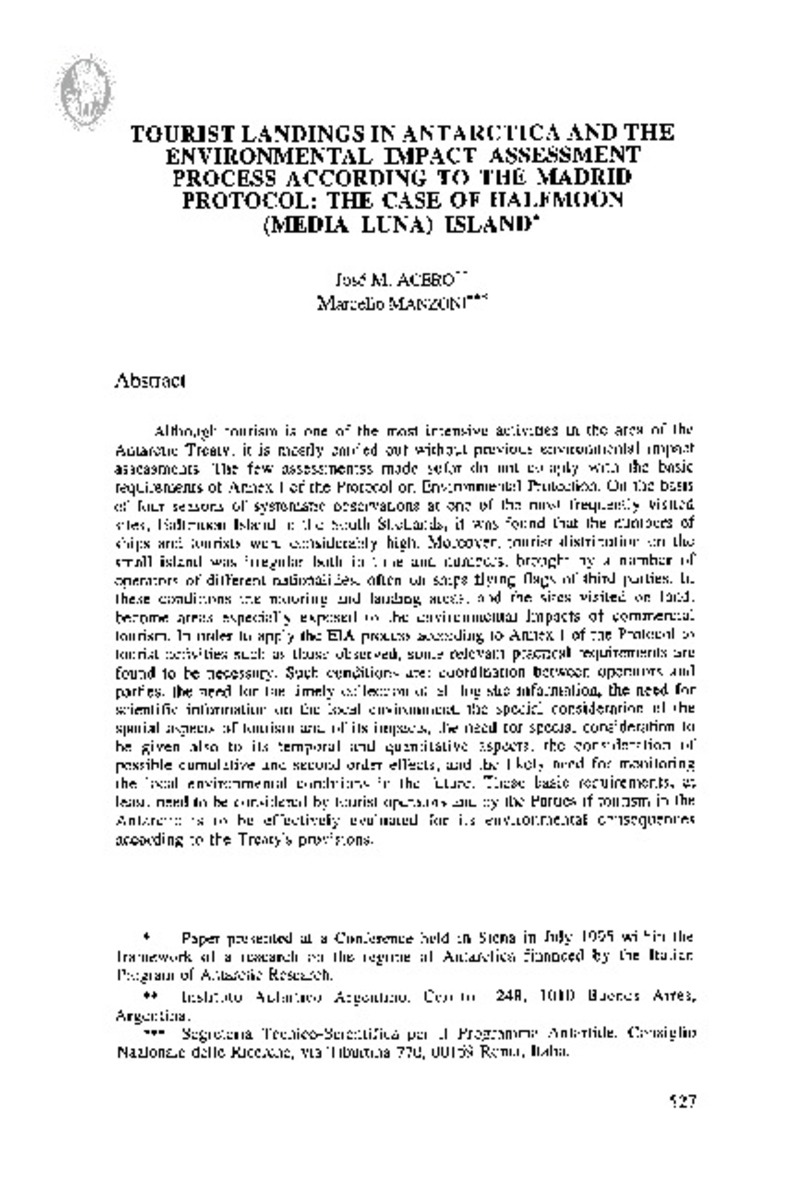Tourist landings in Antarctica and the environemental impact assessment process according to the Madrid Protocol: The case of Halfmoon (media luna) Island
Keywords:
Tourism
Environmental Impact Assessment
Environmental Impact Evaluation in Antarctica
The case of halfmoon
Publisher:
Servicio de Publicaciones de la Universidad de Navarra
Citation:
Acero, J.M. , Manzoni, M. (1997). “Tourist landings in Antarctica and the environemental impact assessment process according to the Madrid Protocol: The case of Halfmoon (media luna) Island”. Anuario de derecho internacional. XIII, 527-546
Statistics and impact
0 citas en

0 citas en

Items in Dadun are protected by copyright, with all rights reserved, unless otherwise indicated.







